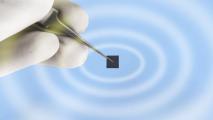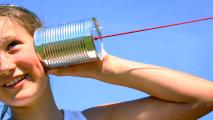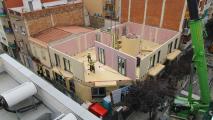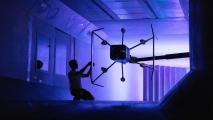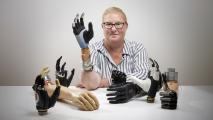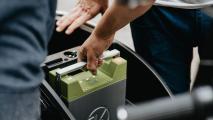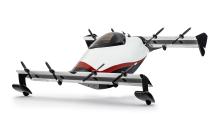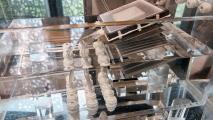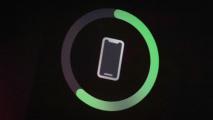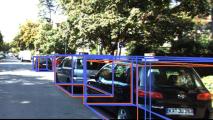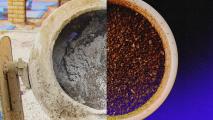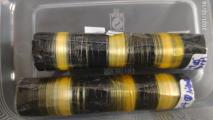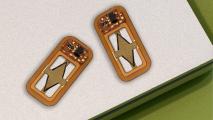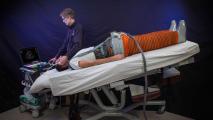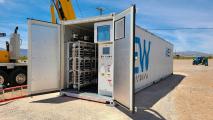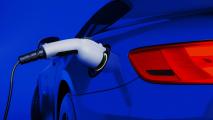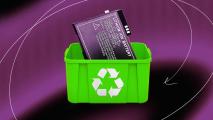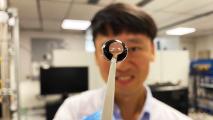
Materials
Though we live in a digital age, material science has shaped history—and it’s far from over. From quantum computers to fusion reactors, breakthroughs in materials will drive the next technological frontier.
More
The faster, cheaper, no-brainer way to replace dirty construction
Startups are using Sims-like software and IKEA-like manufacturing to solve the housing crisis with sustainable construction.
Amazon’s Prime Air is coming to a new US city
Amazon’s Prime Air drone delivery service is expanding to three new cities and adding a drug-delivery option in an existing one.
This bionic hand is fused to a woman’s bones, muscles, and nerves
A new way of merging the body with a bionic hand provided a woman with more control over her prosthetic and less phantom limb pain.
What causes lithium-ion battery fires? Why are they so intense? And how should they be fought?
When a lithium-ion battery fire breaks out, the damage can be extensive. These fires are intense, long-lasting, and hard to fight.
You’ll be able to buy this flying car for $190k in 2024 (Updated)
Startup Pivotal has unveiled the Helix eVTOL, a one-seater aircraft it plans to begin selling for $190,000 in 2024.
Desalination system could produce freshwater that is cheaper than tap water
Engineers are aiming to turn seawater into drinking water with a completely passive, solar-powered device that is inspired by the ocean.
Should you charge your phone overnight? Will “overcharging” make it explode?
Does prolonged (or overnight) charging wreak havoc on your phone battery? An expert answers this and other common battery questions.
New AI algorithm transforms 2D photos into 3D maps
A new method named MonoXiver uses AI to build up reliable 3D maps of a camera’s surroundings based only on 2D photos.
Researchers brew a stronger concrete using — coffee?
Researchers and engineers from RMIT University made concrete 30% stronger in the lab by incorporating aggregates made from coffee grounds.
Adding spider DNA to silkworms creates silk stronger than Kevlar
Spider silk is strong and tough, but hard to farm. Silkworm silk is easy to farm, but not that strong. What if we could combine the two?
An implantable device could enable injection-free control of diabetes
MIT engineers designed an implantable device that carries islet cells along with its own on-board oxygen factory to keep the cells healthy.
Spending time in space can harm the human body − but scientists are working to mitigate these risks before we go to Mars
With NASA planning more missions to space in the future, scientists are studying how to mitigate health hazards that come with space flight.
California utility will try to store renewable energy in iron-flow batteries
A California utility company is testing whether iron-flow batteries could be the answer to the renewable energy storage problem.
New low-carbon cement is stronger than the regular stuff
A low-carbon cement developed by two MIT grads has officially exceeded industry standards for strength, durability, and more.
Self-driving cars can now tell passengers what they’re thinking
AV startup Wayve has given its self-driving cars the ability to explain their decisions in conversational language.
Device offers long-distance, low-power underwater communication
Researchers create a device with piezoelectric transducers that enables battery-free underwater communication.
EV battery material breakthrough could cut charging times to 6 minutes
A new anode material could allow electric vehicle (EV) batteries to hold more energy and charge up faster.
Batteries made from recycled metal coming to US
Four companies are teaming up to make more eco-friendly lithium-ion batteries by injecting recycled metal into the supply chain.
SpinLaunch will hurl payloads into orbit, cutting the cost of launch by 20x
Rockets are big because they require enormous amounts of fuel. SpinLaunch’s method does away with much of that by hurling payloads into space.
New battery charged by tears will power smart contact lenses
An ultra-thin, flexible battery could lead to safe, comfortable smart contact lenses partially powered by our tears.
Subscribe to the newsletter

